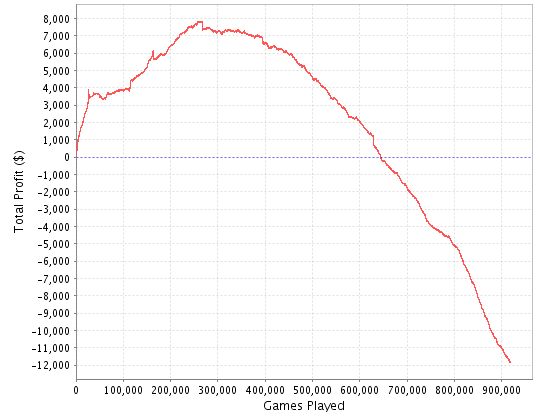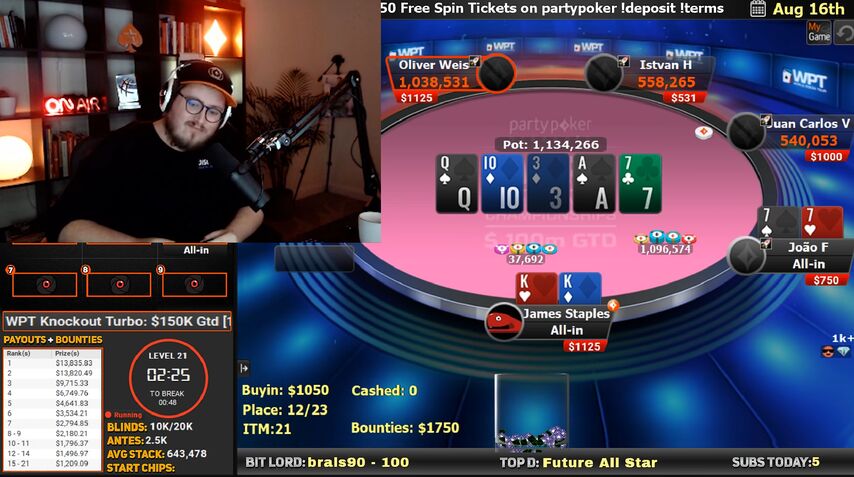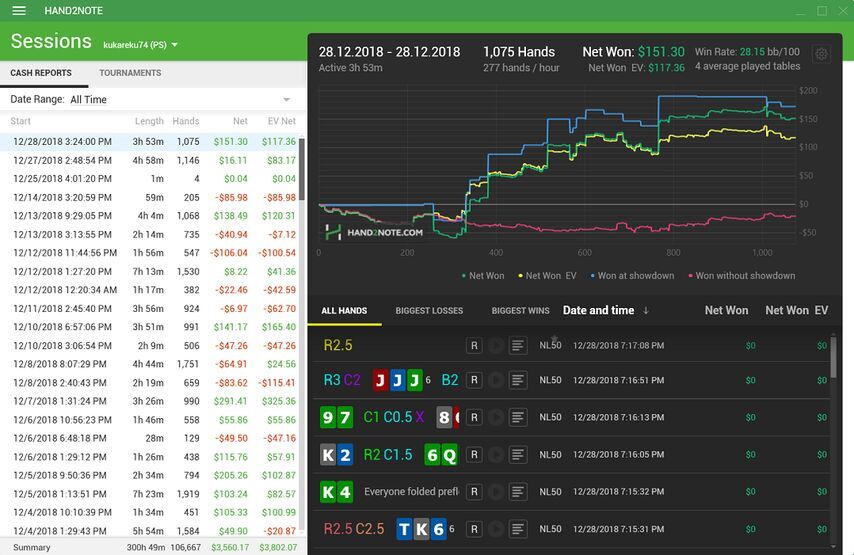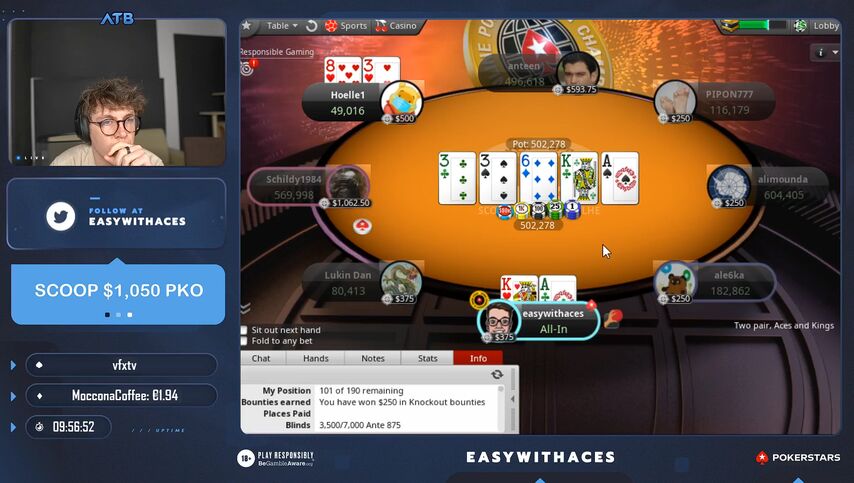What is the downswing in poker?
Sometimes, players take a loss over several sessions and seem to be experiencing bad luck. That’s what is known as a downswing in poker, and it can affect every player, from pros to beginners.
Being perceptive enough to recognize a downswing and identify the root cause is the best-case scenario. When players don’t adjust, downswings have the potential to end their poker careers.
Moving up to higher stakes, having strategy leaks, or being too loose, are just a few things that can turn a poker graph from green to red. Sometimes, downswings can happen despite playing solid poker and studying hard. This is called negative variance – we’ll cover that later on.

Why Do Poker Players Have Downswings?
These days, you don’t need to chalk a downswing up to bad fortune or luck.
Professional poker players understand that going through downswings is part of the sport. Winning all the time is statistically impossible and even top players expect to lose some of the time.
If you play online or live poker tournaments, you’ll probably experience longer downswings than cash game players. That’s normal since tournament players are paid for placing in events, unlike cash game players who can profit from every hand.
These are a few things that can lead to a downswing in poker.

The Stakes Might Be Too High
Did you recently move to cash games with higher stakes or tournaments with bigger buy-ins?
That might have caused your downswing. When we move to higher stakes, there’s a new style of opponent and usually, an increase in skill.
Solution: There’s no shame in going back to slightly lower stakes and rebuilding your bankroll for another shot. You will have more experience the second time around.
In the first few sessions at higher stakes, a slight downswing might be normal, but don’t accept a negative win rate for too long. If you are at a higher stake level than you usually play, your downswing will hurt your bankroll more than normal.
The players at your poker site might be more competitive than average. It’s time to test the waters at a platform that’s notorious for casual players, like America’s Cardroom.
Another reason to switch poker sites has to do with HUDs (heads-up displays).
When you first join a poker site, the players won’t have any data about your username, meaning that you’ll be playing with fresh statistics. You’ve got to remember, almost every experienced player uses a HUD for real-time information on their opponents. These players will take time to get accurate stats about your habits.


There Could Be Leaks in Your Poker Strategy
A leak is a flaw in your poker strategy. Unfortunately, it’s not water that’s leaking, but profits.
Leaks can be small things, like not playing a certain position correctly, but they can amplify over time. Some common examples are:
- Playing loose and calling with too many hands preflop
- Defending the small blind too often
- Calling too many raises from the wrong table position
- Over-folding to turn or river bets
- Not 3-betting often enough
Solution: Leaks can be difficult to find unless you use a tracker program. Sounds complicated? It isn't.

Tracker programs record your results and all other information from your session. When you look back at your reports, they’ll show you where your leaks are. This modern tool lets poker players fix their weaknesses quickly.
Leak patching is done after your sessions, but tracker programs usually have a heads-up display too. Useful information about your opponents gets shown in real time, meaning that you’ll have a much clearer idea of who you’re up against.
Start a 30-day free trial of Hand2Note, one of the best HUD and tracker programs on the market.
Downswings from Negative Variance in Poker
Variance is a probability concept that we can easily explain. If you flip a coin 10 times, you would expect to see 5 heads and 5 tails, but we know that won’t always happen.
Because of variance, results can be higher or lower than we would expect.
You’d expect Ace King to beat 8-3 suited, but you’d be wrong, thanks to some variance during a PokerStars SCOOP tournament.

In poker, variance affects the cards you and your opponents are dealt, as well as the community cards. When you hear players say they are “running bad” or “card dead”, they’re basically describing negative variance.
Solution: Of all the reasons to be on a downswing, this one is the most tricky. Negative variance doesn’t have a solution or a roadmap. Some players experience it for a few days, but others might spend weeks on a downswing because of negative variance.
Don’t lose your confidence and become tilted, as this might deepen the downswings. At times like this when you are seemingly playing good poker, but not getting the results, don’t lose your head. Some players will take breaks, get away for a weekend to relax, or just skip their next session.
Taking breaks will help your mindset and refresh your return to the tables. If you want to play more casual poker without risk, we highly recommend freerolls. Some have cash prizes and some will get you into real money tournaments.
Playing freerolls is a good way to step back from your normal stakes, but still enjoy poker.
- Increased first deposit bonus
- Increased rakeback and reloads
- Help with deposits and cashouts
- Access to private freerolls
- Round-the-clock support





















